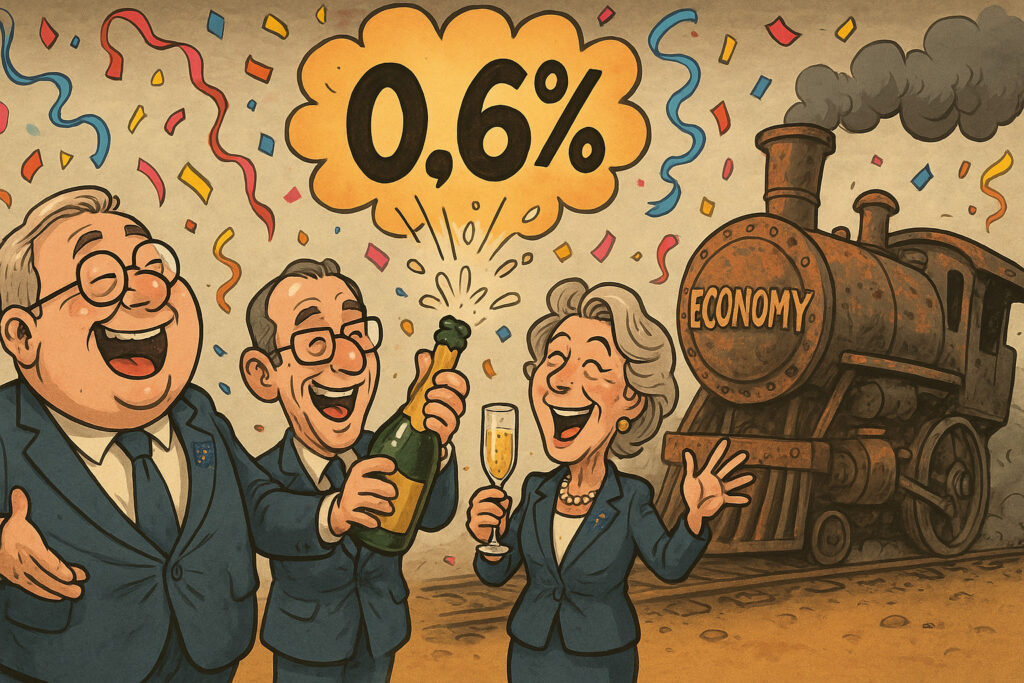Introduction
Eurostat’s revised data for Q1 2025 shows the Eurozone economy expanded by 0.6% quarter-over-quarter, up from the previous 0.4% estimate. The stronger-than-expected growth figure prompted immediate speculation about the European Central Bank’s policy direction as inflation shows signs of cooling. With the ECB’s next rate decision due in three weeks, investors are reassessing whether a tightening pause—or even early easing—is on the horizon.
Body
GDP Revision Details
The upward revision was driven by stronger contributions from Germany and Spain, with private consumption and net exports surprising to the upside. German GDP rose 0.5% (QoQ), reversing the previous quarter’s contraction, while Spain posted a robust 0.9% expansion. Services activity and construction rebounded sharply, suggesting resilience despite persistent geopolitical and energy uncertainties.
Year-on-year, the Eurozone economy grew 1.3%, its best showing since Q2 2023. Importantly, the report highlighted improving business investment and a stabilizing labor market, with unemployment holding at 6.4%.
ECB Dilemma
The ECB has raised rates nine times since July 2022, bringing the deposit rate to 4.25%. Recent CPI data, however, show core inflation easing to 2.7% YoY in May, down from 3.0% in April. Headline inflation fell to 2.3%, bringing it closer to target.
Markets are increasingly divided. ECB President Christine Lagarde struck a cautious tone earlier this week, stating, “We are seeing signs of disinflation, but the job is not yet done.” Governing Council members from Italy and France have hinted that if growth remains stable and inflation moderates, rate hikes may be paused.
Market Response
European equities rose modestly on the news. The Euro Stoxx 50 climbed 0.5% to 4,525, led by bank and industrial stocks. The DAX added 0.4%, and the CAC 40 advanced 0.3%. The euro strengthened slightly to 1.0790/USD, while the yield on Germany’s 10-year bund fell 2bps to 2.46%.
European bond markets responded positively. Peripheral spreads tightened, with Italian 10-year yields dropping 6bps to 3.78%. The Eurozone 5y5y inflation swap—an indicator of long-term inflation expectations—eased to 2.21%, indicating confidence in the ECB’s credibility.
Broader Global Impact
U.S. Treasury yields were stable, with the 10-year at 4.43%, and the dollar index remained unchanged at 104.75. Commodity markets were subdued; gold hovered at $2,330/oz, and crude oil prices remained flat.
ETFs exposed to European equities, such as EZU (iShares MSCI Eurozone ETF), gained 0.6% as investors welcomed stronger growth data. Eurozone financials outperformed, anticipating stronger loan demand and improved NIM (net interest margin) resilience.
Conclusion
The Eurozone’s better-than-expected Q1 GDP growth complicates the ECB’s policy path. While inflation trends support a pause, robust output data argue for patience before any dovish pivot. Markets now look toward June’s CPI and the ECB’s updated macro projections. For investors, Eurozone resilience could bolster equity sentiment but also delay rate cuts. The ECB’s credibility, balancing growth with inflation, remains the cornerstone of its forward guidance.
